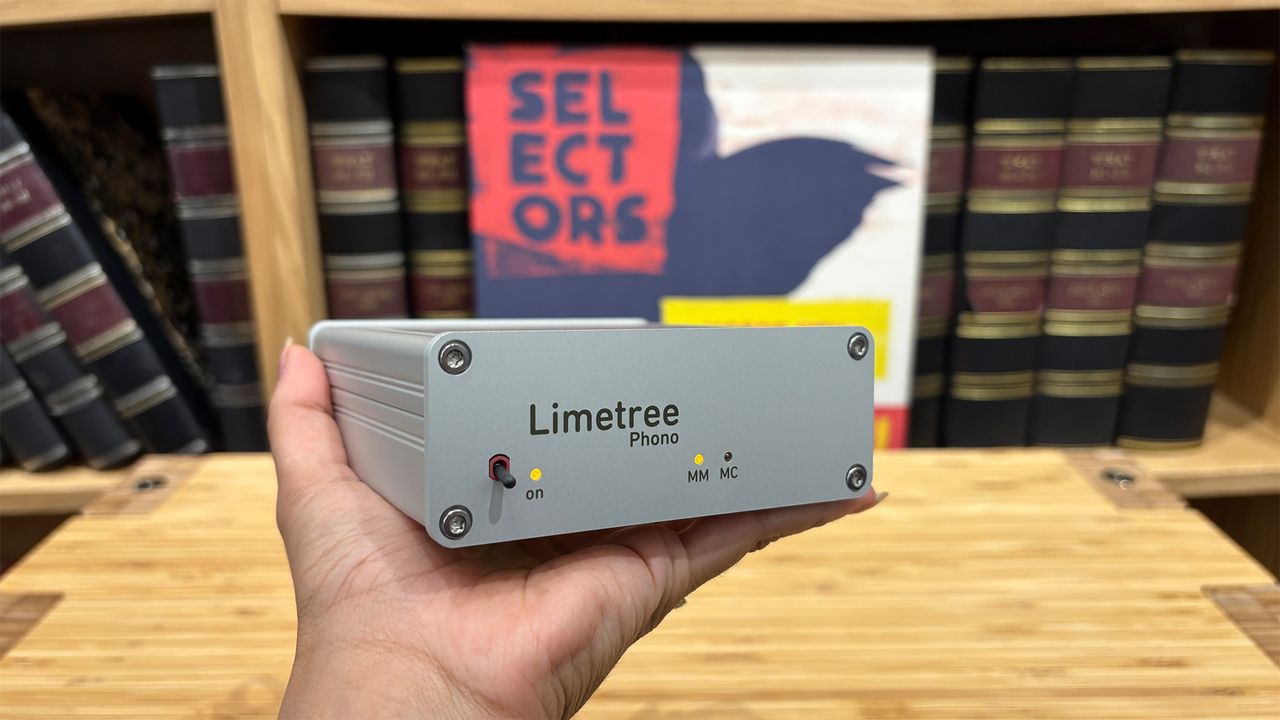
Looking for a talented, sensibly-priced moving magnet phono stage? You can stop searching now, because Lindemann’s Limetree Phono II might be exactly what you need.
Now, don’t judge it on appearances. That unassuming casework may look pretty unremarkable, but it hides a phono circuit design of considerable merit, and even more importantly, a sonic performance that rivals the best at this price.
Build & design
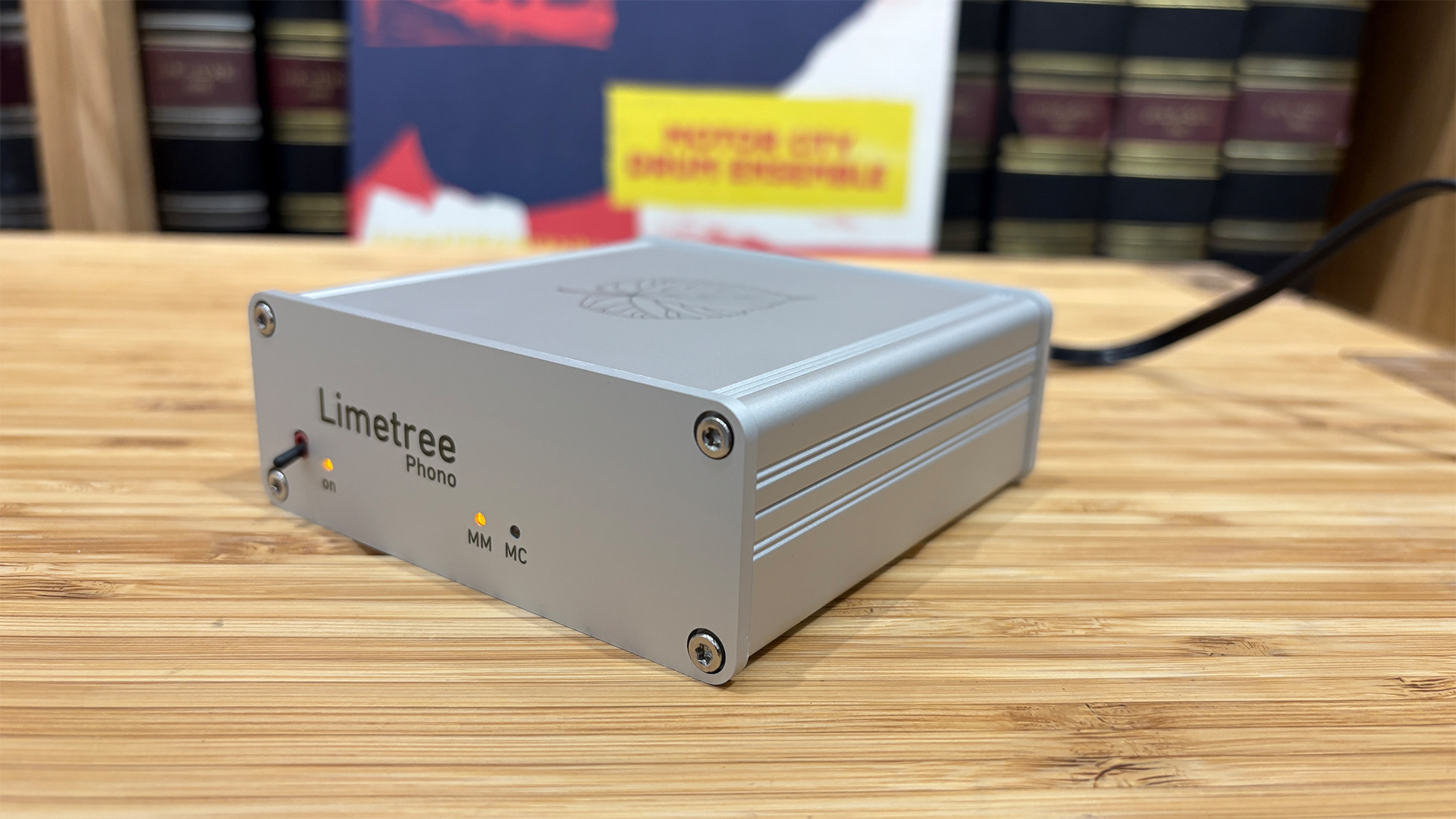
The Limetree Phono II is a small unit, barely taking up more shelf space than a coaster. At 295g, it is light too. So, it is easy to tuck away on an equipment rack, but be warned that heavy or stiff interconnects can and will drag it off the shelf. As with other phono stages, keep it away from anything with a large power transformer to minimise hum levels.
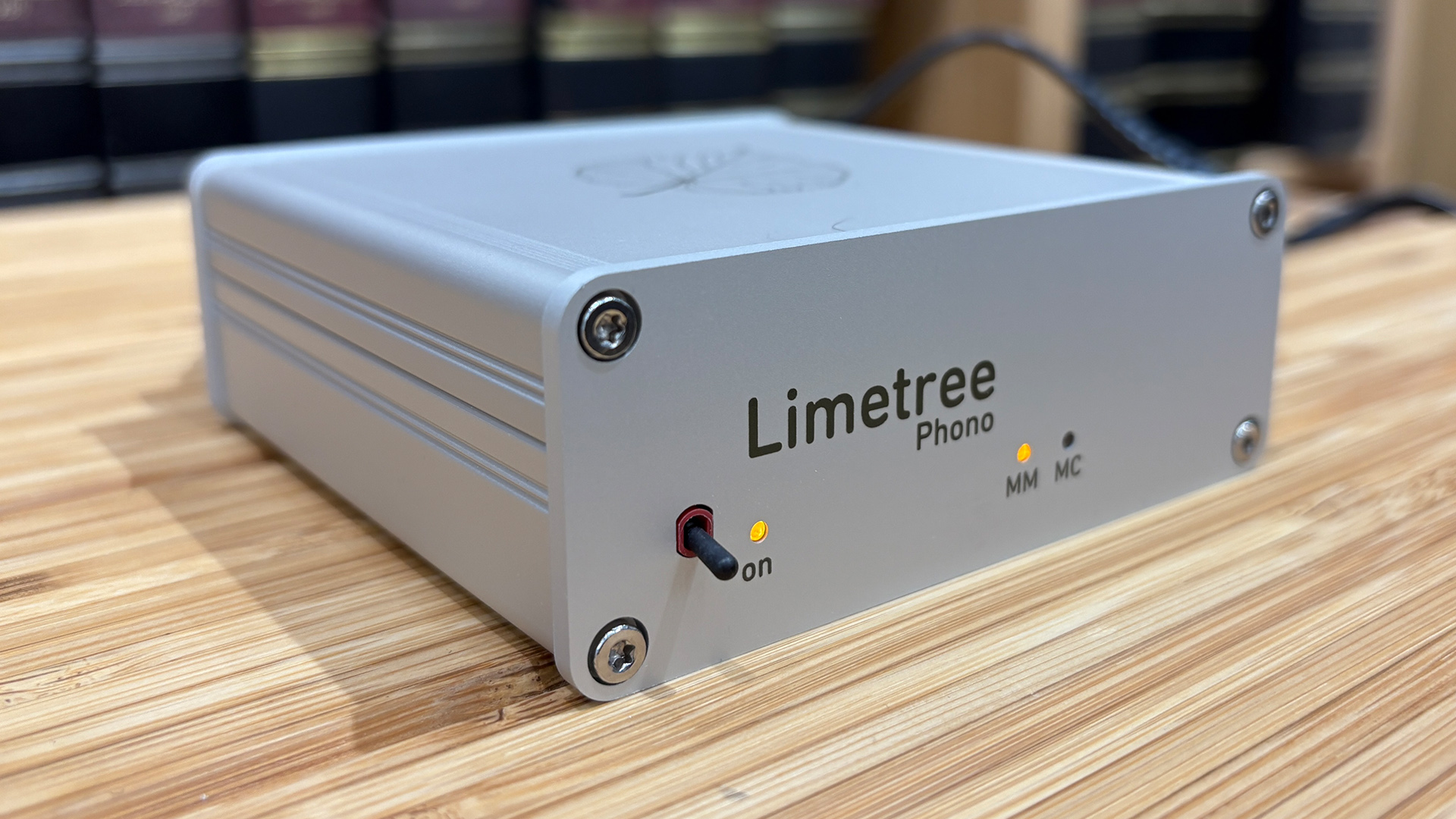
Moving magnet? Yes
Moving coil? Yes
Cartridge loading adjustment? Yes
Remote control? No
Dimensions (hwd) 40 x 107 x 130mm
Weight 295g
We have no issues with the Lindemann’s build or finish. Its aluminium casework is solidly made and nicely finished. The front panel toggle switch not only powers up the unit but also switches it between moving magnet and moving coil options.
On the back, you will find dedicated inputs for each cartridge type and a single stereo RCA output. Power is provided by a separate plug-mounted supply.
Like any serious phono stage, the Limetree Phono II offers a choice of cartridge loading options for its moving coil input, providing a range of resistances from 50 to 400 ohms, accessible via a set of dipswitches on the back panel. While not truly extensive, this spread of values should be enough to cover any conventionally-specified price comparable MC cartridge.
Moving magnet cartridges don’t need any such special treatment, of course, and that input is specified as having a pretty standard 47kOhms/150pF loading.
The Limetree Phono II’s circuit is based on a design originally used back in the day of vintage valve amplifiers. It is a two-stage circuit that uses passive RIAA equalisation and J-FET transistors, while making careful use of premium resistors and capacitors in critical areas.
Gain values are sensibly chosen with 40dB for the moving magnet input and 66dB for the moving coil.
Compatibility
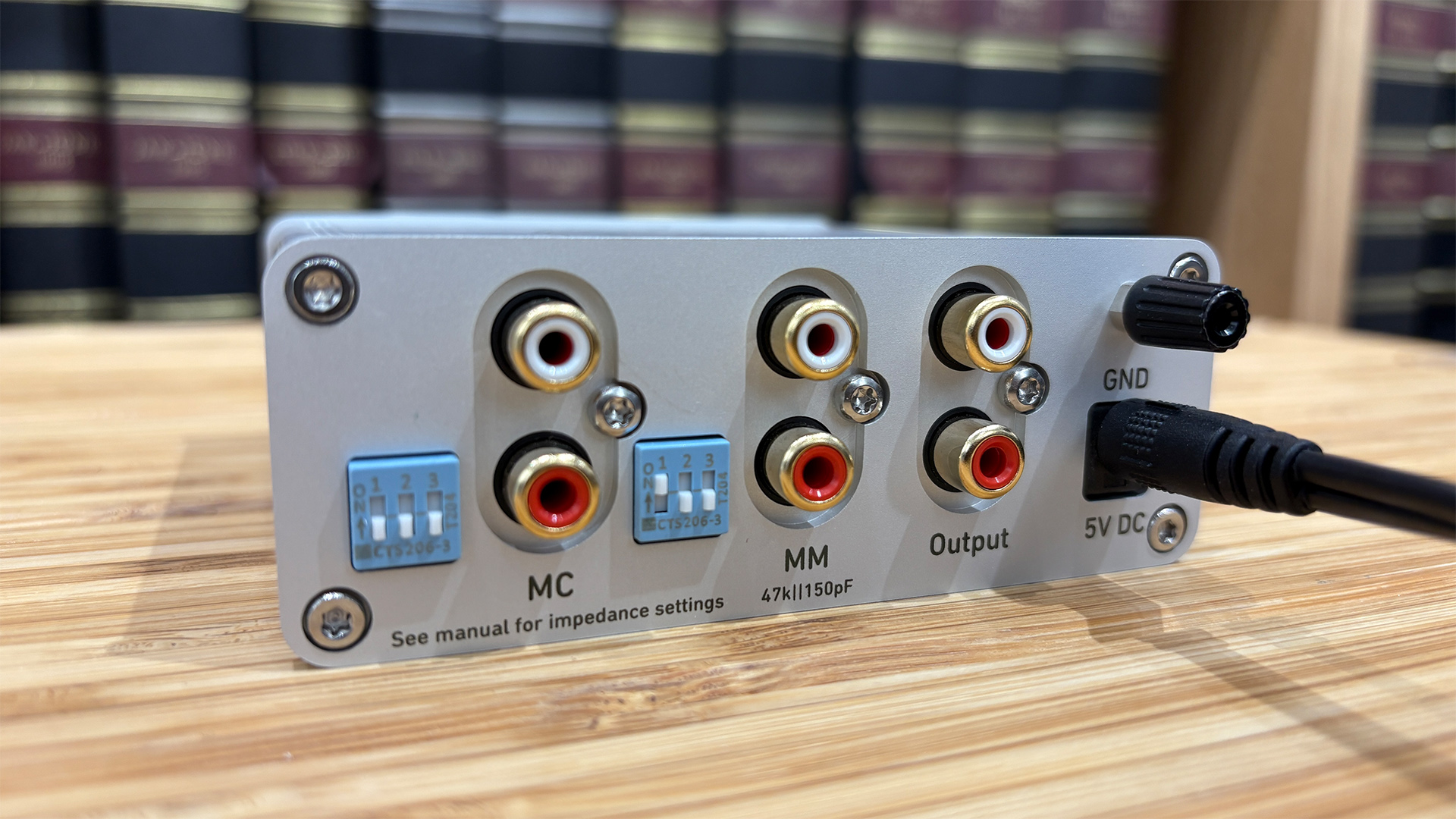
Given this phono stage’s price point, a suitable partnering record player would be something like the Rega Planar 3 RS Edition with Nd5 moving magnet cartridge.
While we do try that, the bulk of this review is done with our reference Technics SL-1000R turntable fitted with either a Nagaoka MP-200 or Vertere Dark Sabre moving magnet cartridge, or the Ortofon MC-X30 moving coil model. Just for fun, we also try our reference high-end Kiseki Purpleheart MC to hear how the Lindemann copes with something high-end and truly ambitious.
It turns out that the Limetree Phono II has plenty of stretch in its abilities. It may not be quite talented enough to reveal the full scope of the Kiseki’s abilities, but we can forgive that, given that the cartridge weighs in at around four times the phono stage’s price. With any of the more price-compatible cartridge options, the Limetree Phono II shines.
Sound
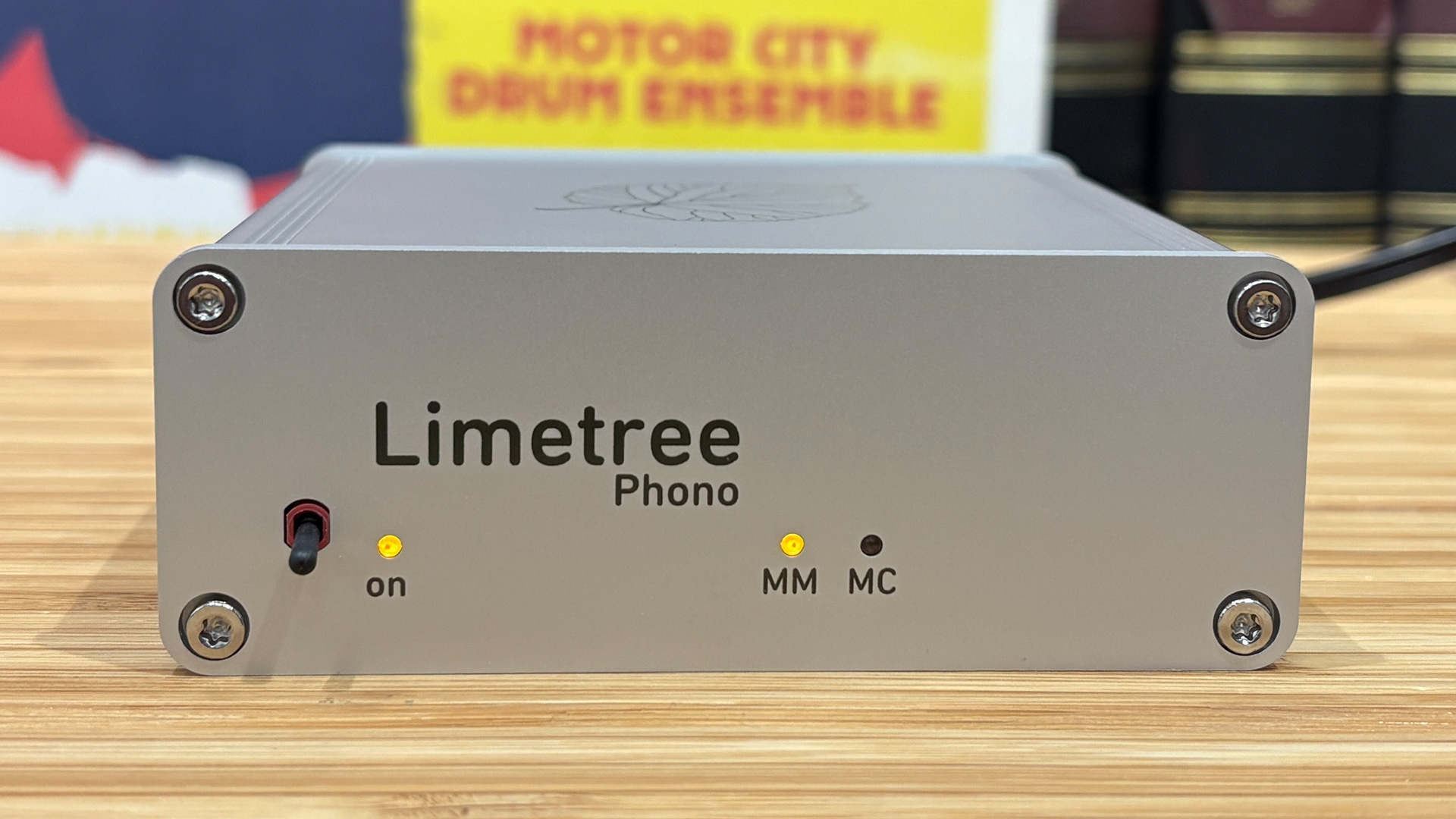
It does the basics well. Noise levels (hiss and hum) are commendably low. Through the moving magnet input, this phono stage sounds detailed and agile, offering plenty of insight into Orff’s Carmina Burana. Those who are familiar with this piece of music know it is something of a musical rollercoaster with savage dynamic swings and dense instrumentation.
The Limetree Phono II doesn’t miss a beat. It is a fast and punchy performer that captures the frenzied energy of the piece well, while having the composure to track low-level instrumental strands with ease.
The Lindemann’s stereo imaging is expansive, with a decent sense of depth and good precision in the way instruments are laid out in front of the listener. The soundstage remains stable and focused even when the music becomes demanding, and there is a fine sense of scale.
Tonally, things are even-handed, though slightly tilted towards a degree of leanness. Those looking for a rich and warm sound would be better looking elsewhere. The Lindemann will deliver balanced results with most cartridges, though we would avoid anything that sounds thin, bright or aggressive. This phono stage isn’t an overly fussy unit, but it will highlight such flaws.
Switching to the moving coil input proves a pleasant surprise. At this price level, most phono stages tend to perform better with moving magnets rather than moving coils (which have substantially lower outputs and more finicky natures as a rule). The Limetree Phono II confounds expectations and delivers high levels of clarity, plenty of detail and a good level of transparency.

It reveals the well-balanced character of Ortofon’s new MC X30 moving coil, highlighting the cartridge’s powers of clarity, precision and expressive dynamics. Whether we listen to Michael Jackson’s Thriller, Billie Eilish’s Happier Than Ever or Kind Of Blue by Miles Davis, the Limetree Phono II copes admirably, slipping into the background and allowing the music to take centre stage.
It has the rhythmic drive to deliver Jackson’s Wanna Be Startin’ Somethin’ with real verve and thumps out the bass with punch and power. The Limetree’s midrange clarity is excellent for the price, revealing the subtle textures of MJ’s voice well. The Billie Eilish set benefits from the same strengths, with the phono stage rendering her vocals with the finesse and delicacy they deserve.
Good as it is, the Lindemann isn’t the only talented phono stage selling for this kind of money.
In fact, if you were only interested in using a moving magnet cartridge, we would point you towards the excellent Graham Slee Reflex M. This is another understated little box that is supremely talented, delivering a slightly fuller and more fluid sound than the Lindemann.
Verdict
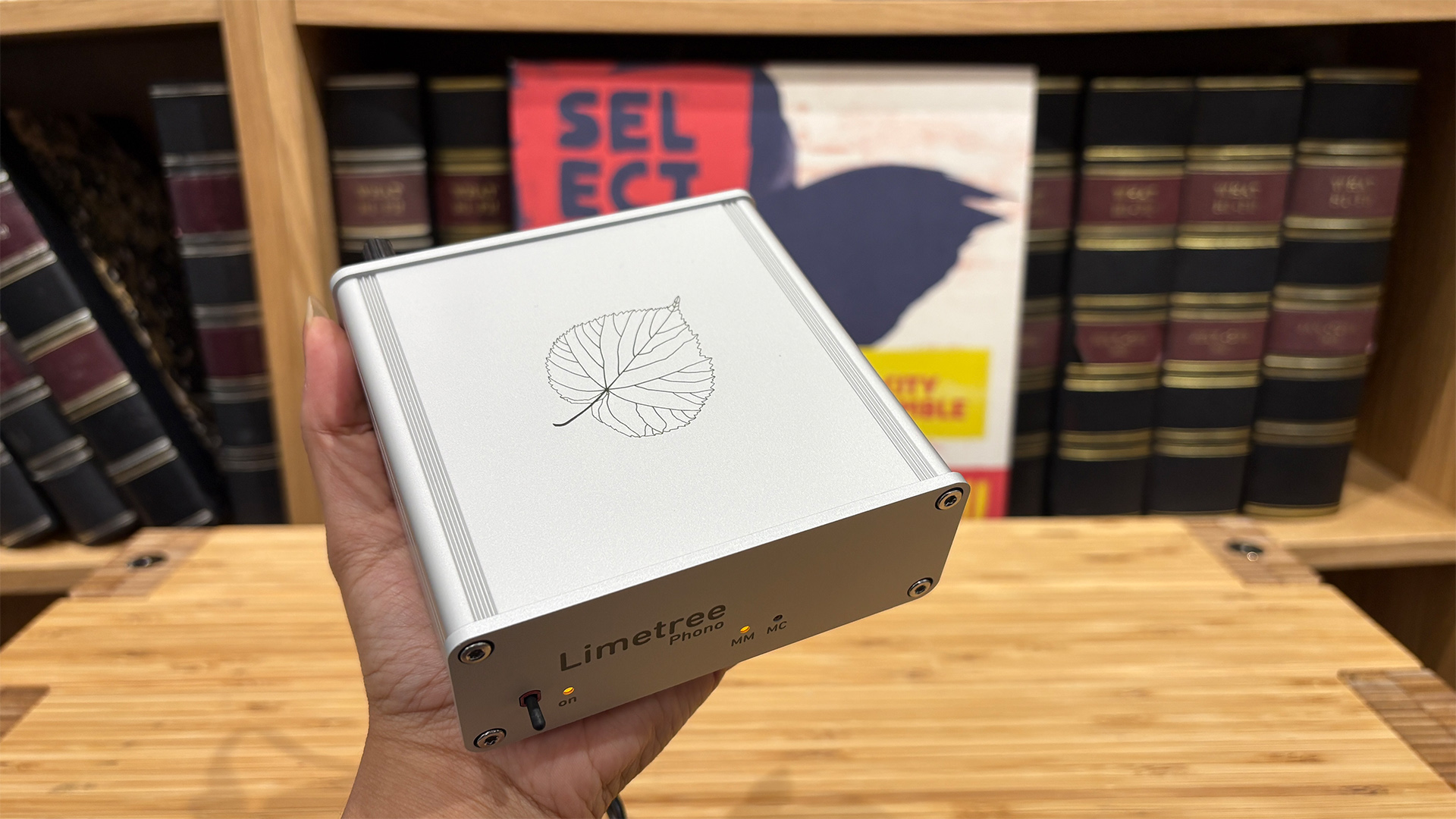
But, if that moving coil ability is essential, then right now we can’t think of an alternative we’ve tested that sounds better than the Limetree Phono II. You would have to stretch to the likes of Rega’s Aria or Vertere’s Phono-1 MkII L, which cost at least double the Lindemann’s price, to get something appreciably better.
Simply put, this phono stage is one that you can buy with confidence.
SCORES
- Sound 5
- Build 4
- Features 4
MORE:
Read our review of the Graham Slee Reflex M
Also consider the Moon 110LP v2
Our pick of the best phono preamps you can buy for every budget







